| The Human Immune System |
THE
IMMUNE SYSTEM - evolved over time to protect
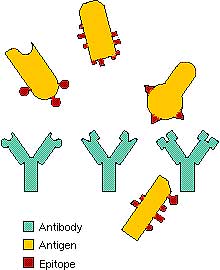 organisms from the threat of perceived antigen. All animals have an immune system. Antigens are anything that might harm the organism and the immune system usually recognizes them as a protein that's shape binds to a receptor on a white blood cell. The immune system will usually manufacture complimentary shaped antibodies to attack the antigen by sticking to and then clumping them (pus is formed this way). Most antigens are the surfaces of a virus, bacteria, fungus parasite (pathogens), or unfortunately the tissue of a foreign graft of tissue such as donated blood or organs such as a kidney or heart. On occasion a person's immune system will perceive self proteins as antigen and generate an autoimmune attack. Diabetes 1, lupus some arthritis, multiple sclerosis, Crone's disease are a few examples of diseases caused by autoimmunity (self immune attack). The main players of the immune system are the white blood cells or lymphocytes of which there are many types which produce antibodies and can remember previous challenges to the the immune system (the basis of vaccination) as well as proteins called compliment which we will not elucidate in our course! 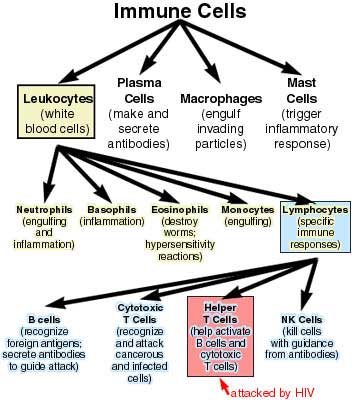 The leucocytes or WBCs are the major players in the immune system. All are produced from stem cells in the Hemopoietic system, the bulk of which lies within the marrow of long bones. The WBCs travel throughout the tissues of the body and take fast tracks by traveling in the lymphatic system. 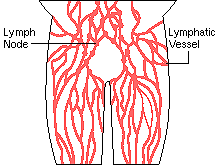 .
The
HIV
virus gains access to the T4 (helper "T") lymphocyte by
attaching to the CD4 cell marker. Fortunately AZT is used by the
HIV
preferentially during reverse transcription than by cells in the
human body!!! (although some harm is felt) |
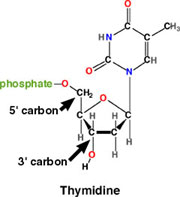
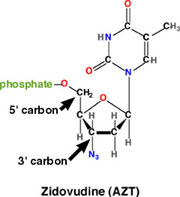 AIDS DRUGS
AIDS DRUGS 